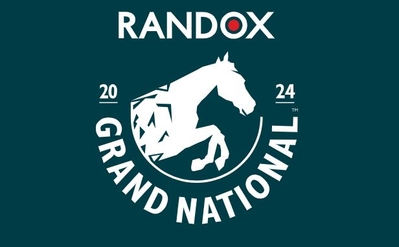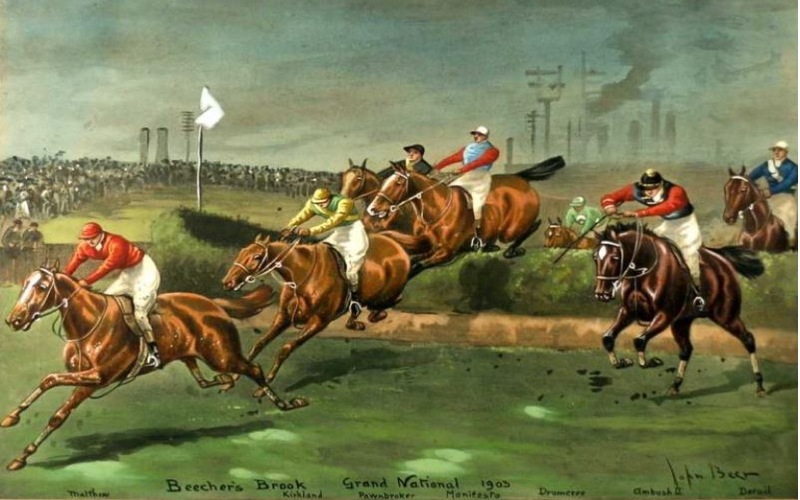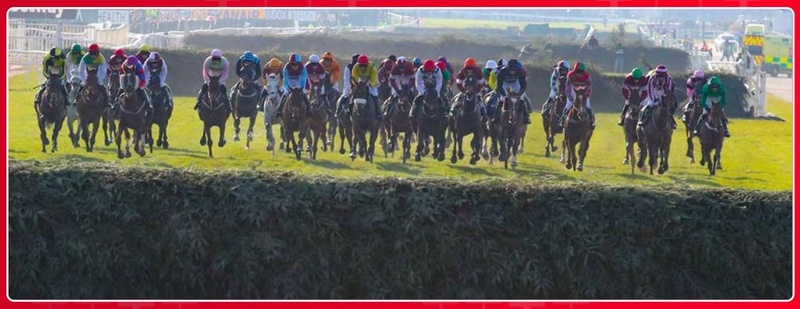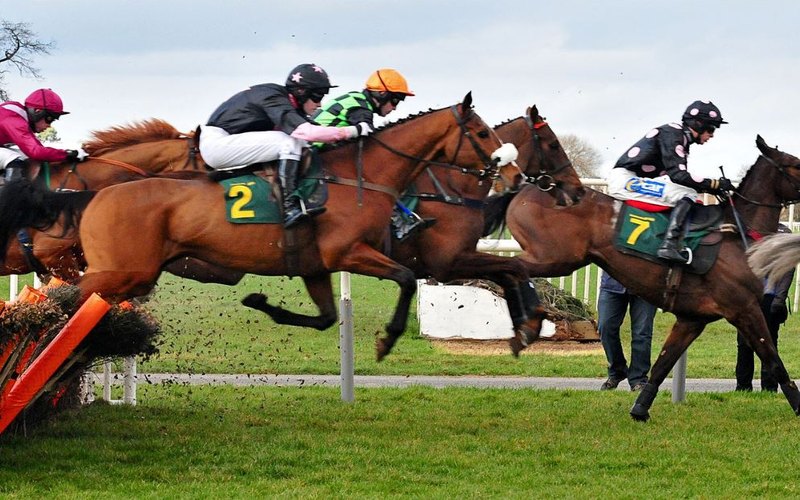How Many Horses Run in the Grand National?
 The Grand National is a race unlike any other in the racing calendar.
The Grand National is a race unlike any other in the racing calendar.
The length of the race, the number of fences, the time it takes to complete, and most pertinently to this article, the number of horses that take part, all set the Grand National apart.
Asking how many horses run in the Grand National might feel like a question with a fairly simple answer, and in some ways it is, but the rules around this have changed over the years.
These rules changed again in early October of 2023, when the maximum number of runners was reduced, but to give a fully rounded idea of why the number of horses that run in the Grand National is what it is, it’s worth going back to the race’s origins.
The year 1839 is widely accepted to be when the first Grand National was run, so let’s start there.
Horses Running in the Grand National has Changed Over Time

In that first race in 1839, there were 17 runners competing to win what would become the most famous meeting in British horse racing, and the horse that won it was called Lottery, ridden by Jem Mason.
If there were any set rules about how many horses could be entered at this time then they haven’t survived, but records show that an average of 20 or so horses ran in the race each year for the next 50 years.
It was also during this period that the Grand National saw the smallest field in its history, occurring in 1883 when just 10 runners ran the course, with just 6 of them finishing it. Zoedone was the winner’s name in that year, in what was arguably the ‘easiest’ Grand National race ever run – if there could ever be such a thing.
Fast forward another 50 odd years and we get to the biggest Grand National ever run.
There were 120 horses put forward for the race in 1929, but even back then before there were any official rules they could see that 120 horses was going to be impossible.
In the end, 66 horses ran, but it proved to be a disaster. A whopping 57 of them, that’s 86.36%, failed to finish the course, mainly due to the number of horses going over the fences at the same time; it was calamity as riders were unseated and horses fell over.
The one good thing to come out of the 1929 race was that the organisers agreed that a limit on runners needed to be put in place to avoid such scenes in the future. It’s not as if they hadn’t already had warning signs either.
The year before, in 1928, there had been 48 entries and all but one of them had fallen, so the winner, Tipperary Tim at 100/1, was in fact the only horse that completed the race that year (one other was remounted and finished but was miles behind) – Tipperary Tim was also one of the fallers in 1929.
However, while information on any rule changes is sketchy, whatever they did was minimal, since 57 runners lined up in 1947.
At some point though, a 50 horse maximum was introduced, not that it was ever really needed as you can see from the table below.
Here are the number of runners for each Grand National in those early days:
| Year | Runners | Finishers |
|---|---|---|
| 1930 | 41 | 6 |
| 1931 | 43 | 12 |
| 1932 | 36 | 8 |
| 1933 | 34 | 19 |
| 1934 | 30 | 10 |
| 1935 | 27 | 6 |
| 1936 | 35 | 10 |
| 1937 | 33 | 7 |
| 1938 | 36 | 13 |
| 1939 | 37 | 11 |
| 1940 | 30 | 17 |
| 1941-45 | WW2 | WW2 |
| 1946 | 34 | 6 |
| 1947 | 57 | 19 |
| 1948 | 43 | 14 |
| 1949 | 43 | 11 |
| 1950 | 49 | 7 |
| 1951 | 36 | 3 |
| 1952 | 47 | 10 |
| 1953 | 31 | 5 |
| 1954 | 29 | 9 |
| 1955 | 30 | 13 |
| 1956 | 29 | 9 |
| 1957 | 35 | 11 |
| 1958 | 31 | 7 |
| 1959 | 34 | 4 |
| 1960 | 26 | 8 |
| 1961 | 35 | 14 |
| 1962 | 32 | 17 |
| 1963 | 47 | 22 |
| 1964 | 33 | 15 |
| 1965 | 47 | 14 |
| 1966 | 47 | 12 |
| 1967 | 44 | 18 |
| 1968 | 45 | 17 |
| 1969 | 30 | 14 |
| 1970 | 28 | 7 |
| 1971 | 38 | 13 |
| 1972 | 42 | 9 |
| 1973 | 38 | 17 |
| 1974 | 42 | 17 |
| 1975 | 31 | 10 |
| 1976 | 32 | 16 |
| 1977 | 42 | 11 |
| 1978 | 37 | 15 |
| 1979 | 34 | 7 |
| 1980 | 30 | 4 |
| 1981 | 39 | 12 |
| 1982 | 39 | 8 |
| 1983 | 41 | 10 |
We have stopped at 1983 because as of 1984, the maximum number of horses allowed to run in the Grand National was brought down from 50 to 40.
1984 Rule Change

After the rule change in 1984, the maximum of 40 horses competed in the Grand National, and in that first year a record 23 horses finished the course.
Although this must have been seen as proof that the new restrictions were a good move, 1984 wasn’t without a fatality; Earthstopper, who finished the race in 5th place, collapsed shortly afterwards and died.
In any case, only 11 runners finished the course in 1985, so any initial back patting no doubt stopped after that.
The reduction of the maximum number of runners also had the rather bizarre effect in creating some sort of scarcity bias, ensuring that the maximum field of 40 was hit for the next 6 years.
Before this, as few as 30 horses had taken part in some years, but once the 40-horse limit was introduced the maximum quota kept being hit until the 1990s, when numbers dipped a bit, but from 2000 onwards the field has been 40 strong every year.
Perhaps this would explain why the number of fatalities in the 40 years after the rule change is actually higher than the number of horse fatalities in the 40 years before.
Fatalities 1943-1983
A quick note here.
Since WW2 interrupted things during this 40-year period, with the race not being run between 1941 and 1945, we are actually 3 Grand Nationals short (1943, 1944, and 1945).
For this reason, we have included the 3 years prior to fill that gap, so 1938, 1939, and 1940.
In this way, there is still data from 40 races before the rule change, to compare with 40 years of data after.
| Year | Horse | Cause |
|---|---|---|
| 1983 | Duncreggan | Fell |
| 1982 | Again The Same | Pulled up |
| 1979 | Kintai | Brought down |
| 1979 | Alverton | Fell |
| 1978 | Rag Trade | Pulled up |
| 1977 | Winter Rain | Fell |
| 1977 | Zeta’s Son | Fell |
| 1975 | Land Lark | Fell |
| 1975 | Beau Bob | Fell |
| 1973 | Grey Sombrero | Fell |
| 1970 | Racoon | Fell |
| 1967 | Vulcano | Fell |
| 1960 | Belsize II | Fell |
| 1959 | Slippery Serpent | Fell |
| 1959 | Henry Purcell | Fell |
| 1954 | Dominick’s Bar | Fell |
| 1954 | Paris New York | Fell |
| 1954 | Legal Joy | Fell |
| 1954 | Coneyburrow | Fell |
| 1953 | Cardinal Error | Fell |
| 1953 | Parasol II | Fell |
| 1952 | Skouras | Fell |
| 1950 | Limestone Cottage | Fell |
| 1946 | Symbole | Fell |
| 1940 | Second Act | Injured on landing |
| 1938 | Cabin Fire | Fell |
| 1938 | Rock Lad | Injured on landing |
That is a total of 27 fatalities in the 40 years (or 40 Grand Nationals anyway) before the 1984 rule change.
If you just compare the number of fatalities with the number of races you get a fatality 67.5% of the time, however, this does not take into account the years in which more than one horse died and the years in which no horses died.
For example, 1984 was a terrible year for fatalities, with 4 horses being euthanised during or after the Grand National.
If we only take into account the years where fatalities occurred, then 45% of the Grand Nationals ran in the 40 years before the 1984 rule change proved fatal.
One last thing to note though, is that horses were euthanised much more callously back then. For example, in 1982 Again the Same was pulled up and taken home, and on the horse’s return it was found to have a broken knee bone.
These days, the horse might have been retired and a new home sought out, but back then it was euthanised as it was no longer fit for purpose. There a couple like this in the list above, so attitudes towards injured horses plays a part in the stats here.
Fatalities 1984-2024
A quick note here too.
This article was written before the 2024 race had been run, but given that the number of fatalities is already higher in this 40 year period than the previous one, the point being made still stands regardless.
Plus, 2024 was the first year a reduced field of 34 horses ran the National, so the hope would be that the race would be safer.
| Year | Horse | Cause |
|---|---|---|
| 2023 | Hill Sixteen | Fell |
| 2022 | Eclair Surf | Fell |
| 2022 | Discorama | Pulled up |
| 2021 | The Long Mile | Pulled up |
| 2019 | Up For Review | Brought down |
| 2012 | Synchronised | Fell |
| 2012 | According to Pete | Brought down |
| 2011 | Ornais | Fell |
| 2011 | Dooneys Gate | Fell |
| 2009 | Hear The Echo | Collapsed |
| 2008 | McKelvey | Collided with barrier |
| 2007 | Graphic Approach | Collapsed |
| 2006 | Tyneandthyneagain | Fell |
| 2003 | Goguenard | Brought down |
| 2002 | The Last Fling | Fell |
| 2002 | Manx Magic | Fell |
| 1999 | Eudipe | Fell |
| 1998 | Pashto | Fell |
| 1998 | Do Rightly | Fell |
| 1998 | Griffins Bar | Fell |
| 1997 | Straight Talk | Fell |
| 1997 | Smith’s Band | Fell |
| 1996 | Rust Never Sleeps | Pulled up |
| 1991 | Ballyhane | Collapsed |
| 1990 | Roll-A-Joint | Fell |
| 1990 | Hungary Hur | Pulled up |
| 1989 | Brown Trix | Fell |
| 1989 | Seeandem | Fell |
| 1987 | Dark Ivy | Fell |
| 1984 | Earthstopper | Collapsed |
Looking at these tables, you can see that with 30 fatalities between 1984 and 2023, the 40 years after the 1984 rule change were actually more deadly than the 40 years prior.
That’s despite improving attitudes towards the health and wellbeing of horses in more recent years, despite greater efforts being made to rehome injured horses rather than put them down, and despite missing a year for Covid, so it’s actually only 39 Grand Nationals run.
Again, if we look at the data without nuance then 76.92% of the 39 races ended with a fatality, but if we take into account bad years like 1998 where 3 horses died, and the long stretches like 2013-2018 where no horses died, we see that 53.84% of the 39 races run in this period ended in at least 1 horse fatality.
One other thing that sticks out here is that 4 of the horses on this side of the rule change died from exhaustion after the race had been completed. Not a single fatality was caused by collapse in the 40 years prior.
Perhaps then, as well as the fact that more horses have tended to take part in the race after the rule change than before it, more is being asked of the horses nowadays too?
2023 Rule Change

As we now know, the Grand National wasn’t any safer in 2023 than it was in 1983 statistically, and with consistent and increasing pressure from activist groups, the decision was made to look at the rules again.
On the 12th of October 2023, it was announced that The Jockey Club were introducing a package of new rules around the Grand National.
These included anything from the horse’s minimum handicap rating, recent mistakes over fences, the height of certain fences, improvements to the fences themselves, and more.
These new rules were implemented to improve safety standards since another horse had died in the race the year before.
The big change though, was that the maximum number of horses that could take part was being reduced from 40, to 34.
The idea is that fewer horses trying to get over the fences at the same time and in the same place should reduce the number of collisions and falls, and therefore injuries.
The rules would be implemented for the next Grand National, which was April 13th 2024.
So, ultimately, the answer to the question ‘how many horses run in the Grand National’ is now 34, but how long this will remain the case for is yet to be seen.
Given that the previous upper limit of 40 was in place for four decades though, it seems reasonable to suggest that this new limit will be around for a good long while, and it certainly would be a surprise if it went back up – it would cause outcry amongst campaigners.
The only further change to the number of runners is therefore likely to be another reduction, if further changes happen at all. The Kentucky Derby allows a maximum of 20 runners so there is the potential to reduce numbers further, although going much below 30 would reduce the spectacle of the National a great deal.
